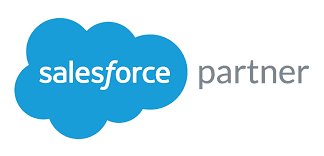Partnering for Innovation, Driving Results Today
Transform your vision into reality with our expert e-commerce services
We understand the ever-evolving landscape of e-commerce and the pivotal role it plays in shaping the success of modern businesses. Transform your digital landscape with seamless E-commerce Implementation across Oracle, Salesforce, and CommerceTools platforms for unparalleled performance and growth.

Technology Partners
At Omni Junction, we believe in the power of collaboration to drive innovation and create exceptional experiences.




What We Do
Our services are designed to empower your brand with a robust online presence, seamless user experiences, and scalable solutions that drive growth.
Our team works closely with you to understand your business goals, target audience, and unique requirements. Through meticulous strategic planning, we craft a tailored e-commerce roadmap that aligns with your vision.
Leveraging the latest technologies and industry best practices, we implement e-commerce solutions that are not just functional but also at the forefront of innovation. Stay ahead in the competitive online marketplace with our tech-forward approach.
We believe in creating e-commerce platforms that deliver exceptional user experiences. Our design philosophy revolves around user-centricity, ensuring that your customers enjoy a seamless and enjoyable journey from browse to purchase.
As your business grows, so should your e-commerce platform. Our implementations are built with scalability in mind, allowing your online store to evolve and adapt to changing market dynamics effortlessly.
Seamlessly integrate your e-commerce platform with essential third-party tools, payment gateways, and logistics systems. Our expertise ensures that all components work together harmoniously, streamlining your business operations.
With the increasing prevalence of mobile shopping, we prioritize mobile optimization to ensure that your e-commerce platform delivers a consistent and enjoyable experience across devices.
Our commitment doesn't end with the launch. We provide continuous support and maintenance services to keep your e-commerce platform running smoothly, address any issues promptly, and implement updates for optimal performance.
Distributed Workforce
With our distributed workforce, meaning having teams and talent located across different geographical locations. This allows us tap into a diverse pool of skilled professionals and ensures 24/7 coverage.
Time Zone Advantage
One of the key benefits is the ability to provide continuous support and development by leveraging different time zones. Teams in different locations will work on projects sequentially, allowing for round-the-clock productivity.
Cost Efficiency
By having teams in different geographies and with lower labor costs, it helps in achieving cost efficiencies. This can result in reduced operational expenses while maintaining high-quality service delivery.
Scalability
The flexibility to scale resources up or down based on project requirements. This scalability ensures that we can adapt quickly to changing your needs without the constraints of a fixed local workforce.
Risk Mitigation
Having operations spread across different regions helps us in mitigating risks associated with natural disasters, geopolitical events, or other local disruptions. This ensures our business continuity and minimizes the impact of unforeseen circumstances.
Blending Waterfall and Agile Models
In the dynamic landscape of software development, we have combined the structured nature of the Waterfall model with the flexibility of Agile methodologies that has emerged as a powerful solution. This Hybrid Software Development Lifecycle (SDLC) seamlessly integrates the best features of both models, offering a balanced and adaptive framework for project execution. Here's how it unfolds:
Requirements Elicitation (Waterfall)
We begin with a comprehensive discovery/ requirement gathering phase adhering to the traditional Waterfall model. Clearly define project goals, scope, and deliverables upfront.
Planning (Agile)
We transition into an Agile-inspired planning phase. Break down the project into smaller, manageable iterations or sprints, fostering flexibility and adaptability.
Design (Waterfall)
We apply the sequential and detailed design principles of the Waterfall model. Develop a blueprint for the software architecture, ensuring a solid foundation for subsequent development.
Development (Agile)
We embrace Agile's iterative development approach within the established design framework. Encourage collaboration, continuous integration, and regular deliverables.
Testing (Hybrid)
We conduct testing concurrently with development, as in Agile, but also allocate a specific phase for comprehensive testing, following the Waterfall model. We ensure both unit and system testing are integrated seamlessly.
Deployment (Agile)
We have adopted Agile's incremental deployment strategy. Roll out features in stages, allowing for user feedback and adjustments. This promotes early user engagement and satisfaction.
Testing (Hybrid)
we conduct testing concurrently with development, as in Agile, but also allocate a specific phase for comprehensive testing, following the Waterfall model. We ensure both unit and system testing are integrated seamlessly.
Feedback and Iteration (Agile)
We leverage Agile's feedback loops and iteration cycles. Gather insights from end-users and stakeholders, incorporating changes promptly. This iterative process enhances software quality and user experience.
Project Monitoring (Hybrid)
We implement project monitoring mechanisms inspired by both models. Track project milestones as defined in the Waterfall model, while maintaining the Agile principles of adaptability.
Documentation (Hybrid)
We generate comprehensive documentation inspired by both models. Capture design decisions, project progress, and changes systematically to ensure clarity and future reference.
Quality Assurance (Hybrid)
We blend the Waterfall focus on structured quality assurance with Agile's emphasis on continuous improvement. Regularly assess and enhance quality measures throughout the development lifecycle.
Project Closure (Waterfall)
We conclude the project with a formal closure phase, following the Waterfall model. Summarize the project, conduct final testing, and ensure all deliverables meet predefined criteria.
Contact Us
Reach out to us for inquiries, collaborations, or any assistance you may need.

